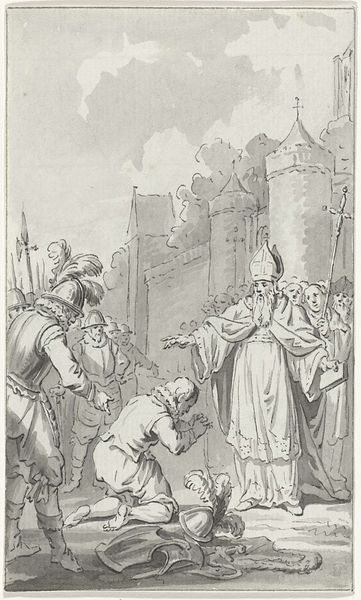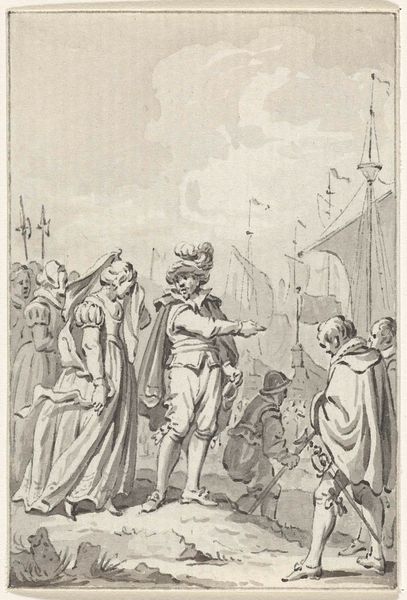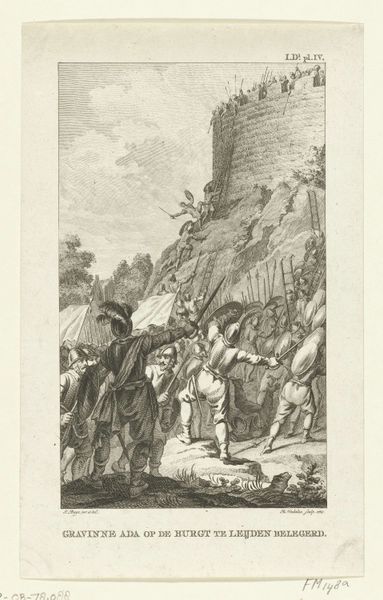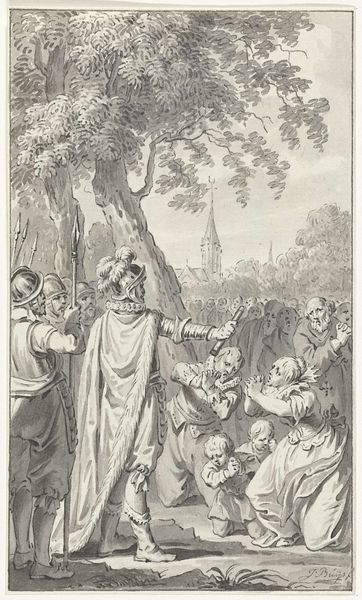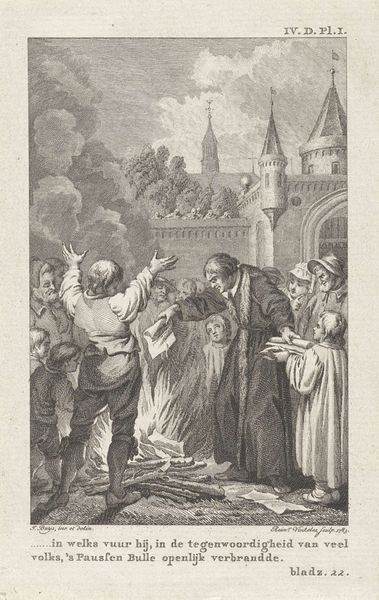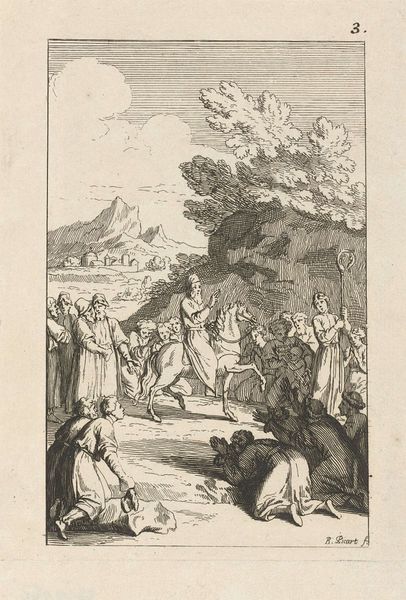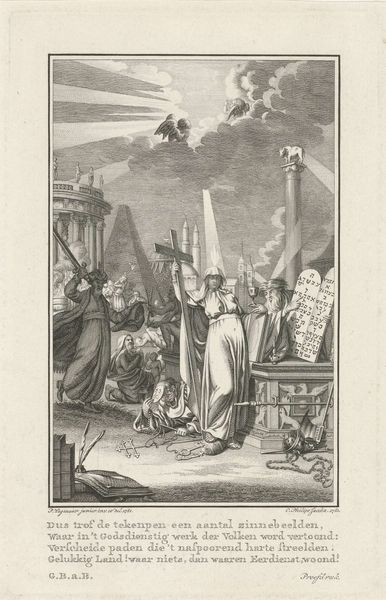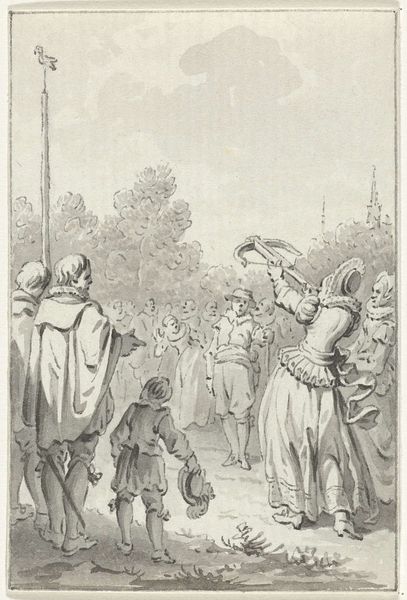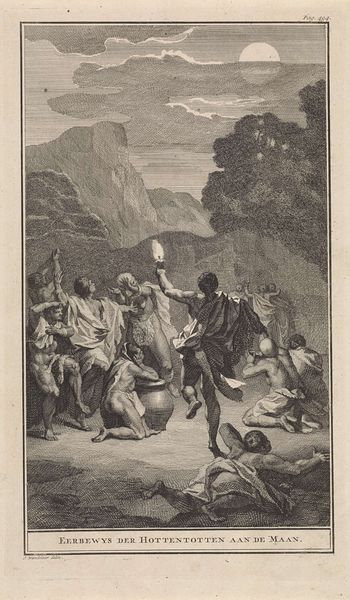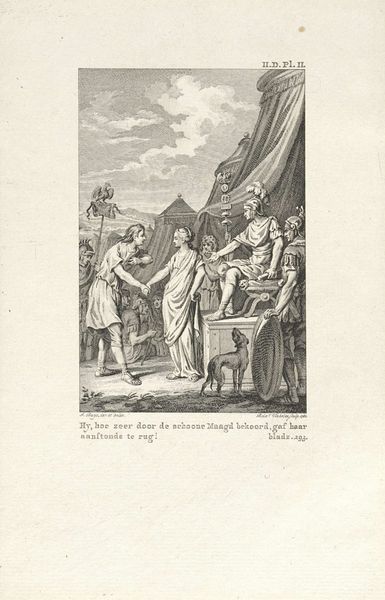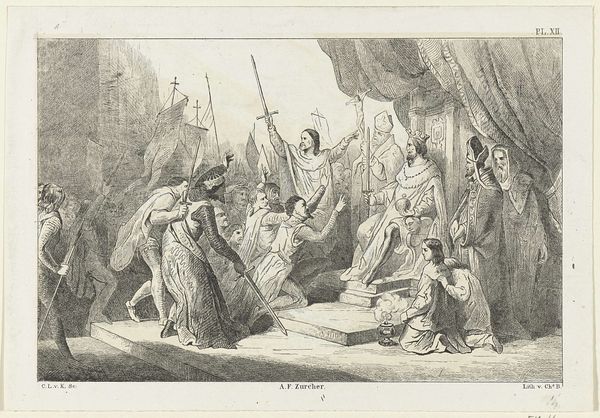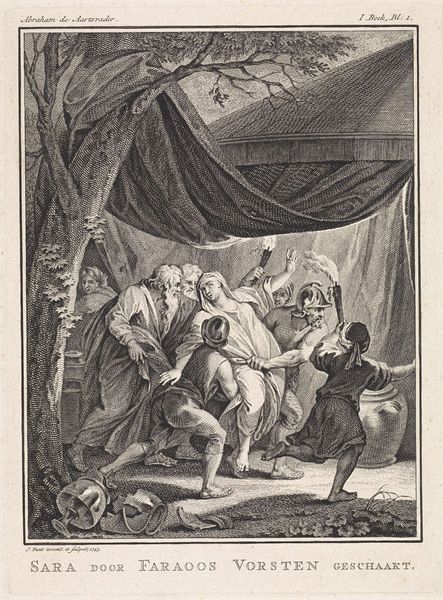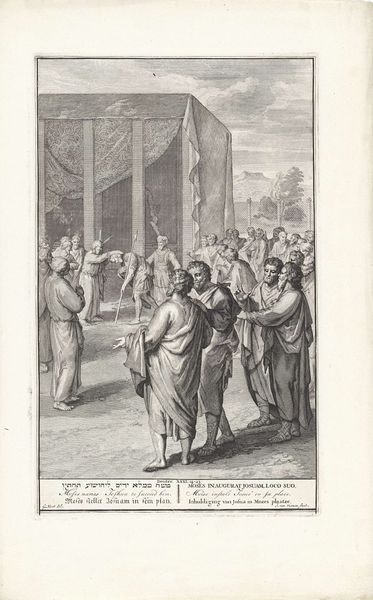
drawing, ink, pen
#
drawing
#
narrative-art
#
pen illustration
#
landscape
#
ink
#
pen
#
history-painting
#
academic-art
#
realism
Dimensions: height 149 mm, width 90 mm
Copyright: Rijks Museum: Open Domain
Curator: Wow, it feels like a chaotic climb into history just by looking at it! Like peering through time's keyhole. Editor: Exactly! We are looking at a pen and ink drawing by Jacobus Buys, dating from 1783 to 1785. It’s titled "Gravin Ada belegerd in de Burcht van Leiden, 1204"—"Countess Ada Besieged in Leiden Castle, 1204". Curator: So, instantly, I'm zeroing in on the energy. Even with just pen and ink, the battle practically roars off the page! I'm getting "charging into destiny" vibes! What draws you in? Editor: I’m struck by the historical context—a powerful woman, Countess Ada, caught in a succession struggle. Buys places her narrative amidst the Hook and Cod wars, an era of intense political factionalism in Holland. The siege is both literal and symbolic. Curator: Yes, and those figures scaling the fortress, the ladders… talk about visual metaphors for ambition and conflict! And yet, everything's rendered with this meticulous, almost academic precision. Editor: Well, Buys was definitely operating within an academic art tradition. The detailed rendering of the figures, their armor, even the landscape, speaks to that. But within it all, I notice a strong nationalistic sentiment in this era of enlightenment ideals looking back to the fatherland for identity. It definitely reads as more of a statement on Dutch identity and perhaps a slight move towards legitimizing certain ruling powers. Curator: True. The landscape serves as more than just a setting, right? It becomes an active participant. All of those frantic diagonals—ladders, spears—inject real movement into the drawing! It's as if the whole composition is itching to break free of the paper. The weight and strain really are visible in the climber's muscles. I love it. Editor: I appreciate how this work brings together different strands—history, politics, and artistic skill. It definitely invites you to think about power dynamics, gender, and how historical narratives are constructed. It is about a need to harken back to historical or pseudo-historical narratives to inspire patriotism, as it would be perceived, in the hearts of the Dutch people. Curator: Totally. For me, it’s this raw, visceral energy. Jacobus Buys captured not just an event, but the turbulent, messy essence of historical transformation. What do you feel walking away from it? Editor: I am walking away reflecting on how we use art to remember, reimagine, and perhaps, even rewrite our past, challenging our own perspectives on how those stories influence our world today.
Comments
No comments
Be the first to comment and join the conversation on the ultimate creative platform.
